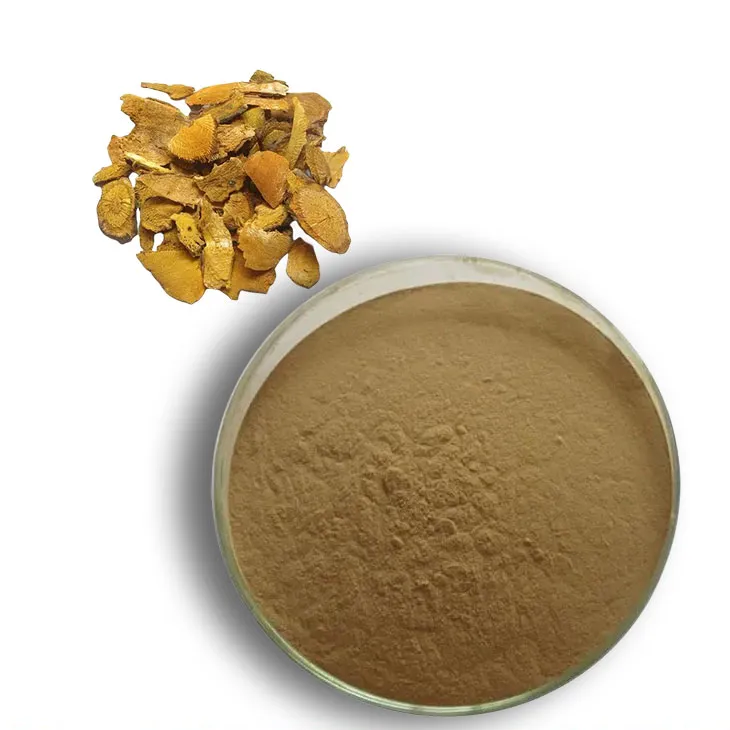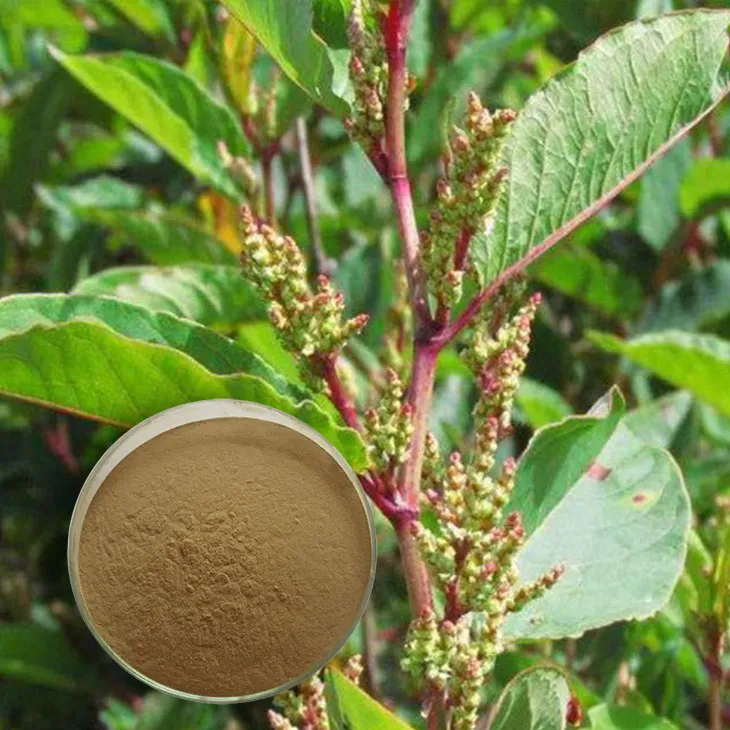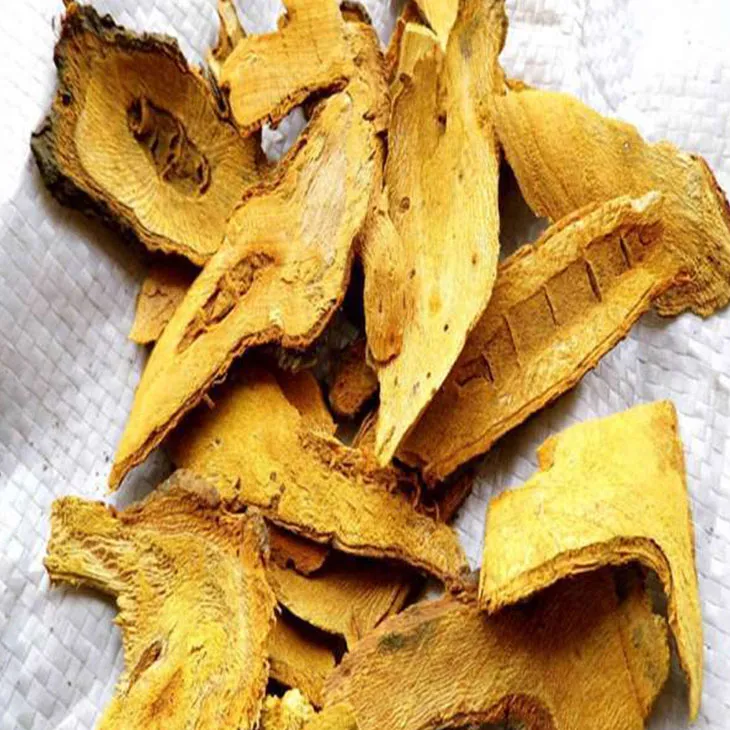- 0086-571-85302990
- sales@greenskybio.com
The Flavor of Mature Polygonum cuspidatum and Natural Polygonum cuspidatum Extracts
2024-11-11

1. Introduction
Polygonum cuspidatum, also known as giant knotweed, is a plant with significant characteristics. The taste of mature Polygonum cuspidatum can be a gateway to understanding its deeper properties. Meanwhile, the natural extracts of this plant are rich in various components that hold great potential in multiple aspects. This article aims to delve into the relationship between the taste of mature Polygonum cuspidatum and its chemical composition, and further explore the value of its natural extracts in different fields.

2. The Taste of Mature Polygonum cuspidatum
2.1 Initial Sensory Impressions
The taste of mature Polygonum cuspidatum is complex and multi - faceted. At first bite, one may notice a certain earthiness, which is a common characteristic in many plants that grow in natural environments. This earthy flavor is often associated with the roots' connection to the soil and the absorption of various minerals.
2.2 Bitterness and Its Significance
There is also a distinct bitterness in the taste of mature Polygonum cuspidatum. This bitterness can be attributed to the presence of certain chemical compounds. Interestingly, bitterness in plants is sometimes an indication of the presence of bioactive substances. In the case of Polygonum cuspidatum, these bitter - tasting compounds may play a role in its potential health - promoting effects.
2.3 Aftertaste
The aftertaste of Polygonum cuspidatum is equally important. After the initial taste sensations, there is often a lingering flavor that can be described as slightly astringent. This astringency might be related to tannins present in the plant. The aftertaste gives a sense of the plant's "depth" and can leave a memorable impression on the palate.

3. Chemical Makeup of Polygonum cuspidatum
3.1 Polyphenols
Polygonum cuspidatum is rich in polyphenols. These are a class of chemical compounds that are known for their antioxidant properties. Polyphenols such as resveratrol are among the important components in Polygonum cuspidatum. Resveratrol has been widely studied for its potential anti - aging, anti - inflammatory, and heart - healthy effects.
3.2 Flavonoids
Flavonoids are also present in significant amounts in Polygonum cuspidatum. They contribute to the plant's color and flavor. Flavonoids play a role in various biological processes, including antioxidant activity and cell signaling. In the context of taste, they may be responsible for some of the more nuanced flavor profiles of Polygonum cuspidatum.
3.3 Anthraquinones
Anthraquinones are another group of chemical constituents in Polygonum cuspidatum. They have laxative properties in traditional medicine. Anthraquinones also have an impact on the overall chemical balance of the plant and may interact with other compounds to influence the taste and the potential medicinal value.

4. The Relationship between Taste and Chemical Makeup
4.1 How Chemical Compounds Influence Taste
The various chemical compounds in Polygonum cuspidatum directly influence its taste. For example, polyphenols can contribute to the bitterness and astringency. The antioxidant nature of these compounds gives the plant a certain "edge" in its flavor profile. Flavonoids, on the other hand, may add a more complex and fruity undertone to the overall taste. Anthraquinones, with their unique chemical properties, might be related to the earthy and somewhat pungent aspects of the taste.
4.2 Taste as an Indicator of Chemical Composition
The taste of Polygonum cuspidatum can also serve as an indicator of its chemical composition. A more bitter taste may suggest a higher concentration of polyphenols or other bioactive compounds. The earthy flavor could be related to the presence of minerals and certain organic matter. By understanding the relationship between taste and chemical makeup, we can gain insights into the quality and potential uses of Polygonum cuspidatum.
5. Natural Polygonum Cuspidatum Extracts
5.1 Extraction Methods
There are several methods for extracting natural Polygonum Cuspidatum Extracts. One common method is solvent extraction, where solvents such as ethanol or water are used to dissolve the active components from the plant material. Another method is supercritical fluid extraction, which uses supercritical carbon dioxide. This method is often preferred for its ability to produce high - quality extracts with minimal solvent residue.
5.2 Composition of the Extracts
The natural extracts of Polygonum cuspidatum contain a concentrated form of the plant's chemical components. They typically include high levels of polyphenols, flavonoids, and anthraquinones. These extracts are a valuable source of bioactive substances that can be used for various purposes.
6. Value of Natural Polygonum Cuspidatum Extracts in Health Promotion
6.1 Antioxidant Activity
The polyphenols and flavonoids in Polygonum cuspidatum extracts exhibit strong antioxidant activity. Antioxidants are crucial for protecting the body against oxidative stress, which is linked to various diseases such as cancer, heart disease, and neurodegenerative disorders. By consuming or using products containing Polygonum cuspidatum extracts, individuals can potentially enhance their antioxidant defenses.
6.2 Anti - Inflammatory Effects
Studies have shown that certain components in Polygonum cuspidatum extracts have anti - inflammatory properties. Inflammation is a key factor in many chronic diseases. The anti - inflammatory effects of these extracts can help reduce inflammation in the body, potentially alleviating symptoms of conditions like arthritis and inflammatory bowel disease.
6.3 Potential in Cardiovascular Health
The extracts may also have benefits for cardiovascular health. Resveratrol, for example, has been shown to improve blood vessel function and reduce cholesterol levels. By promoting healthy blood vessels and lipid profiles, Polygonum cuspidatum extracts can contribute to a lower risk of heart disease.
7. Value of Natural Polygonum cuspidatum Extracts in Environmental Protection
7.1 Phytoremediation
Polygonum cuspidatum has the ability to accumulate heavy metals from the soil. When used in phytoremediation, its natural extracts can be studied for their potential role in enhancing the plant's ability to clean up polluted soils. This could be a more sustainable approach to environmental remediation compared to traditional chemical methods.
7.2 Ecosystem Restoration
The presence of Polygonum cuspidatum in an ecosystem can have a positive impact on soil stability and biodiversity. Natural extracts may be used to support the growth and propagation of Polygonum cuspidatum in areas where ecosystem restoration is needed. This can help in the restoration of degraded landscapes and the promotion of a more balanced ecosystem.
8. Conclusion
In conclusion, the taste of mature Polygonum cuspidatum is a complex manifestation of its chemical makeup. Understanding this relationship can provide valuable insights into the plant's properties. The natural extracts of Polygonum cuspidatum are a rich source of bioactive compounds with significant potential in health promotion and environmental protection. Further research is needed to fully explore the potential applications of these extracts and to optimize extraction methods for maximum benefit.
FAQ:
Question 1: What are the main components in the natural Polygonum cuspidatum extracts?
The natural Polygonum cuspidatum extracts mainly contain components such as resveratrol, polydatin, and flavonoids. Resveratrol is a well - known antioxidant with potential health - promoting properties. Polydatin also has certain bioactive functions, and flavonoids contribute to the overall pharmacological activities of the extract.
Question 2: How does the taste of mature Polygonum cuspidatum relate to its chemical composition?
The taste of mature Polygonum cuspidatum is influenced by its chemical composition. For example, the presence of certain phenolic compounds and flavonoids may contribute to its unique flavor. Some of these components may have a bitter or astringent taste, which is characteristic of the plant. The chemical makeup also determines the potential health benefits associated with the taste, as these compounds often have biological activities.
Question 3: What are the potential health benefits of consuming natural Polygonum cuspidatum extracts?
Natural Polygonum cuspidatum extracts may have several potential health benefits. Due to the presence of antioxidants like resveratrol, it may help in reducing oxidative stress in the body. It has also been studied for its potential anti - inflammatory properties, which could be beneficial for various inflammatory conditions. Additionally, there are indications that it may have a positive impact on cardiovascular health, such as improving blood lipid profiles.
Question 4: How is the natural Polygonum cuspidatum extract obtained?
The natural Polygonum cuspidatum extract is typically obtained through extraction methods. This can involve using solvents such as ethanol or water to extract the active components from the plant material. The plant is first harvested, and then the extraction process is carried out under controlled conditions to ensure the quality and purity of the extract.
Question 5: Can the taste of mature Polygonum cuspidatum be used to assess its quality?
While the taste can provide some indication, it is not a comprehensive method to assess the quality of mature Polygonum cuspidatum. The taste can be affected by various factors such as the growing conditions and harvesting time. However, a significant deviation from the normal taste may suggest possible issues with the plant, such as contamination or improper growth. To accurately assess quality, more scientific methods like chemical analysis are required.
Related literature
- The Chemical Constituents and Bioactivities of Polygonum cuspidatum"
- "Analysis of the Taste - related Compounds in Polygonum cuspidatum"
- "Health - promoting Effects of Natural Polygonum cuspidatum Extracts: A Review"
- ▶ Hesperidin
- ▶ Citrus Bioflavonoids
- ▶ Plant Extract
- ▶ lycopene
- ▶ Diosmin
- ▶ Grape seed extract
- ▶ Sea buckthorn Juice Powder
- ▶ Fruit Juice Powder
- ▶ Hops Extract
- ▶ Artichoke Extract
- ▶ Mushroom extract
- ▶ Astaxanthin
- ▶ Green Tea Extract
- ▶ Curcumin
- ▶ Horse Chestnut Extract
- ▶ Other Product
- ▶ Boswellia Serrata Extract
- ▶ Resveratrol
- ▶ Marigold Extract
- ▶ Grape Leaf Extract
- ▶ New Product
- ▶ Aminolevulinic acid
- ▶ Cranberry Extract
- ▶ Red Yeast Rice
- ▶ Red Wine Extract
-
Eyebright Extract
2024-11-11
-
Curcuma Longa Extract/Turmeric extract
2024-11-11
-
Yellow Pine Extract
2024-11-11
-
Senna Leaf Extract
2024-11-11
-
Red Wine Extract
2024-11-11
-
Diosmin
2024-11-11
-
Oyster Mushroom Extract Powder
2024-11-11
-
Green coffee bean Extract
2024-11-11
-
Elderberry Extract
2024-11-11
-
Soy Extract
2024-11-11





















